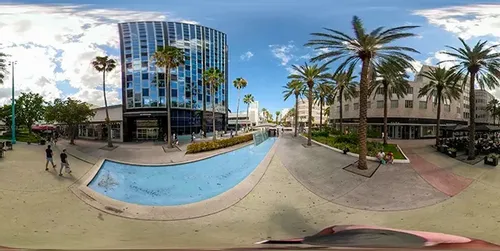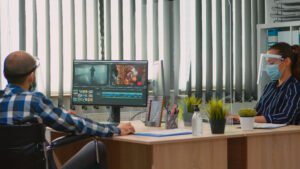Creating stunning panoramic visuals requires more than just snapping a series of overlapping photographs. To transform individual images into a breathtaking wide-angle view, specialized skills, software, and editing expertise are essential. That is where professional editors come in, ensuring that the final output is seamless, distortion-free, and visually appealing. Let’s explore how experts achieve this level of quality and precision in panorama stitching.
The Role of Panorama Image Stitching Services in Professional Photography
Panorama image stitching services involve combining multiple photographs with overlapping fields of view into one continuous, wide-angle image. These services are widely used in industries such as real estate, e-commerce, tourism, architecture, and even gaming. Professionals ensure that the images align perfectly, without visible seams, exposure mismatches, or distortions that can occur when done manually or with basic software.
By leveraging high-end tools and advanced editing techniques, experts can enhance depth, detail, and perspective while maintaining the natural look of the scene. This level of precision is particularly important for businesses where image quality directly influences customer engagement, such as in real estate virtual tours or travel marketing campaigns.
Step-by-Step Process Professionals Follow
Delivering flawless panorama stitching is not a one-click process. It requires a combination of technical know-how, creativity, and attention to detail. Here are the steps experts typically follow:
1. Careful Image Selection
Professionals begin by choosing the right set of images with adequate overlap—usually between 20% to 40%. Too little overlap makes alignment difficult, while too much overlap can cause redundancy.
2. Alignment and Registration
Using specialized software, editors align the selected images. Algorithms detect matching points in adjacent photos to create an accurate base structure. However, experts often manually fine-tune alignment to prevent visible mismatches.
3. Blending and Exposure Matching
One of the most challenging parts of stitching is blending areas where images meet. Professionals correct differences in exposure, color tones, and lighting to ensure smooth transitions. They also balance brightness and contrast so no single section appears uneven.
4. Correcting Distortions
Panoramas often suffer from warping or bending, especially if taken with wide-angle lenses or handheld devices. Experts use perspective correction techniques to maintain natural lines, straighten horizons, and preserve scale.
5. Final Retouching
After the primary stitching process, professionals refine the final image by removing imperfections, adjusting sharpness, and enhancing clarity. This step ensures the panoramic photo looks natural and captivating to the viewer.
Why Professional Expertise Makes the Difference
While software applications can automatically stitch photos, the results are rarely flawless without human intervention. Professionals bring an eye for detail, technical mastery, and industry-specific experience that ensures consistent results. For example:
- Real estate photography demands flawless panoramas to create immersive property tours that attract buyers.
- Travel and tourism marketing requires captivating visuals that inspire emotion and drive bookings.
- E-commerce platforms use stitched images for interactive 360° product views, enhancing customer trust.
Without professional intervention, inconsistencies in alignment, color, or distortion can distract viewers and diminish the visual impact.
Tools and Techniques Used by Experts
Professional panorama editors often rely on advanced tools like Adobe Photoshop, PTGui, Hugin, and Autopano. These tools offer sophisticated alignment algorithms, masking features, and perspective correction. However, software alone cannot guarantee perfection. It is the skill of the editor—knowing when to override automation, how to retouch transitions, and how to balance exposures—that produces seamless results.
Additionally, experts may use techniques such as:
- HDR blending for scenes with varied lighting.
- Masking and layering to control difficult transitions.
- Lens correction profiles to counter optical distortions.
- Manual stitching adjustments for complex scenes like cityscapes or interiors.
The Business Value of Seamless Panorama Stitching
High-quality panoramic images are more than just beautiful visuals—they are strategic business assets. In today’s digital-first world, customers engage more with immersive imagery than with static photos. Businesses that invest in professional panorama image stitching services gain a competitive edge by offering visually rich experiences that captivate audiences.
For instance, a real estate agency can showcase entire rooms in a single panoramic shot, providing potential buyers with a realistic sense of space. Similarly, a travel company can highlight destinations in a way that inspires wanderlust and builds trust with customers.
Conclusion
Experts deliver seamless results in panorama image stitching services by combining advanced technology with years of practical experience. From carefully selecting images to correcting distortions and refining details, every step in the process is handled with precision. The result is a polished, professional panoramic image that enhances visual storytelling and drives business value.




